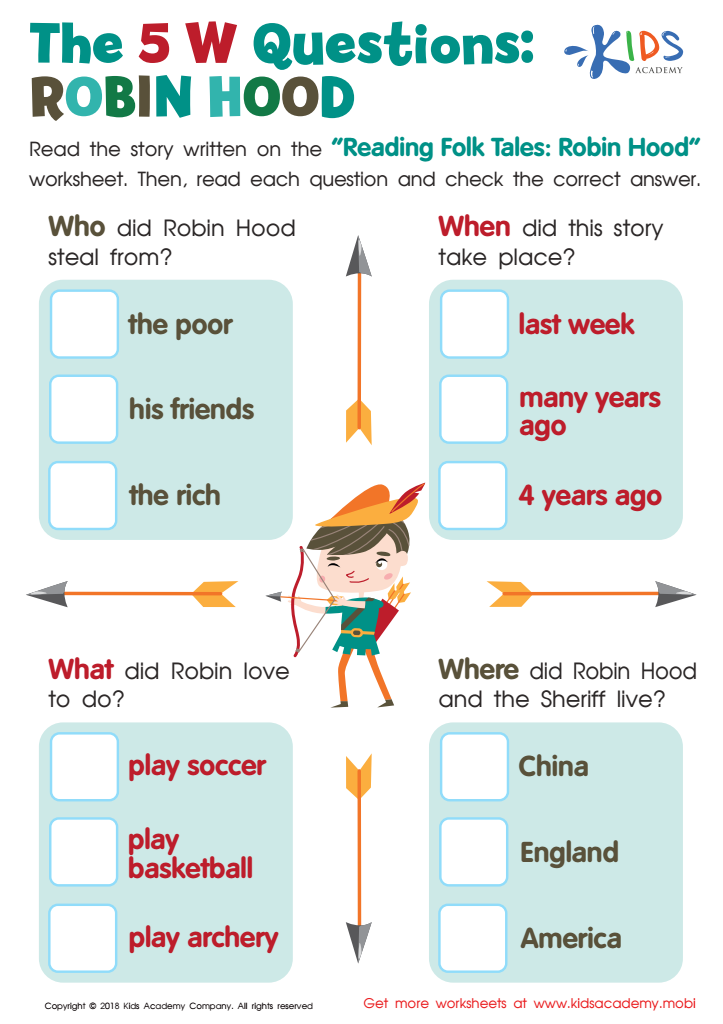Story analysis Reading Comprehension Worksheets for Ages 6-9
5 filtered results
-
From - To
Enhance your child's reading skills with our engaging Story Analysis Reading Comprehension Worksheets for Ages 6-9! Designed to cultivate critical thinking and deepen understanding, these worksheets help young readers analyze narratives through various activities. Children will practice identifying key elements like characters, settings, and main ideas while answering thought-provoking questions. Our resources encourage discussions, enhancing vocabulary and comprehension skills in a fun way. Ideal for homeschooling, classrooms, or extra practice at home, these printable worksheets make learning enjoyable and effective. Support your child's reading journey today and watch them become confident, thoughtful readers! Explore our collection now!


Who Are The Characters Worksheet


Key Details from the Princess and the Pea Worksheet


The 5 W Questions: Robin Hood Worksheet


Who Are the Characters? Worksheet


Puss in Boots Vocabulary Worksheet
Story analysis and reading comprehension are crucial for children aged 6-9 because they build the foundation for effective communication, critical thinking, and a lifelong love of reading. At this age, children begin to engage more deeply with texts and develop their ability to interpret, analyze, and respond to stories. By focusing on story analysis, teachers and parents can help children make connections between the narrative and their own experiences, fostering their emotional and social growth.
Additionally, story analysis enhances vocabulary acquisition and helps children understand the elements of a story, such as plot, character, and setting. This not only aids in improving their comprehension skills but also encourages creativity and imagination. When children learn to analyze stories, they develop the skills to summarize, question, and infer, which empowers them to better retain information and express their thoughts clearly.
Furthermore, understanding multiple perspectives and themes promotes empathy and cultural awareness. When children learn to analyze and discuss stories, they engage more actively in their learning, which boosts their confidence and motivation in reading. Ultimately, prioritizing story analysis in reading comprehension for young learners equips them with essential skills that they will carry throughout their educational journey and beyond.
 Assign to My Students
Assign to My Students




















